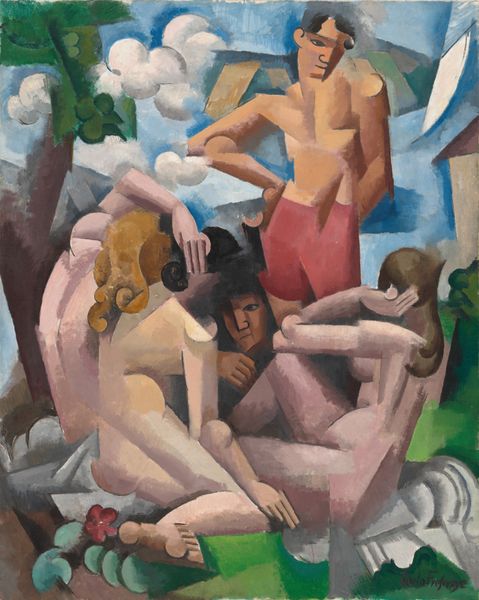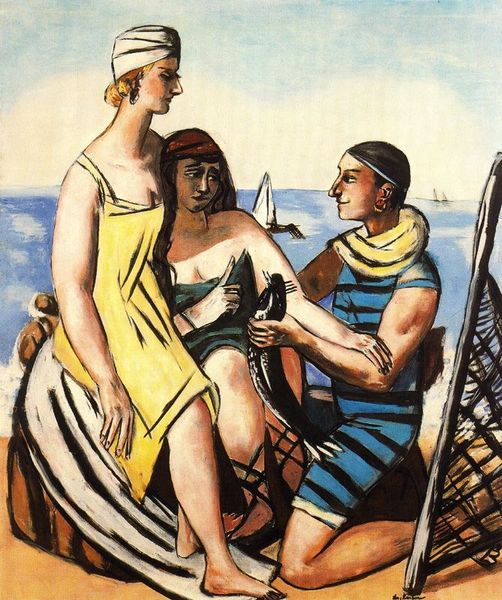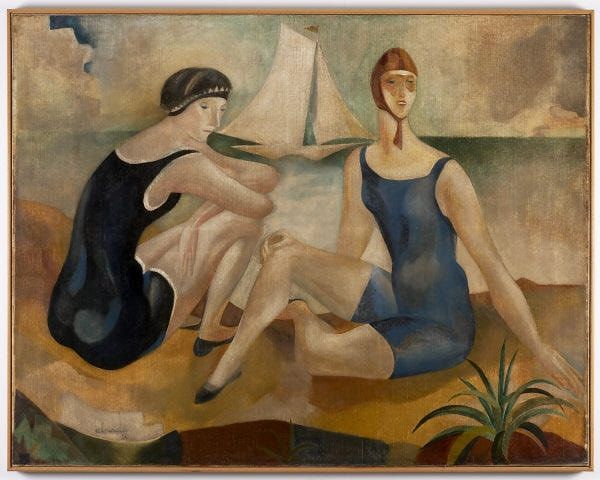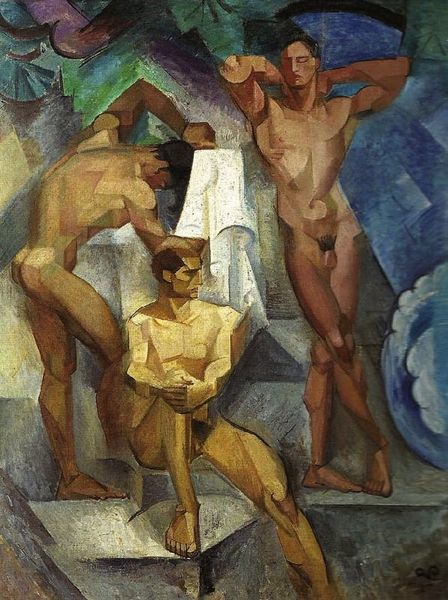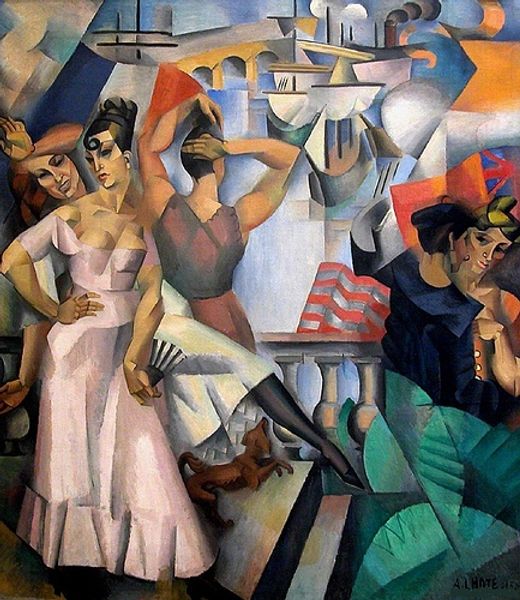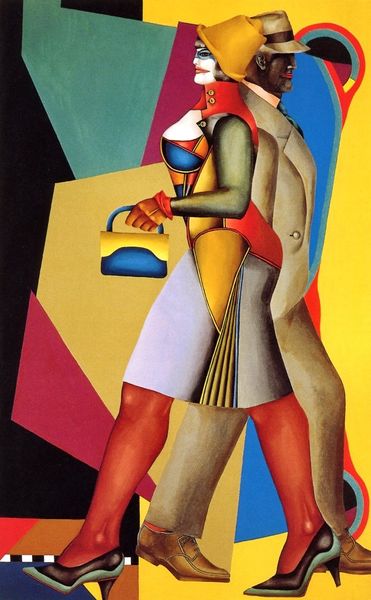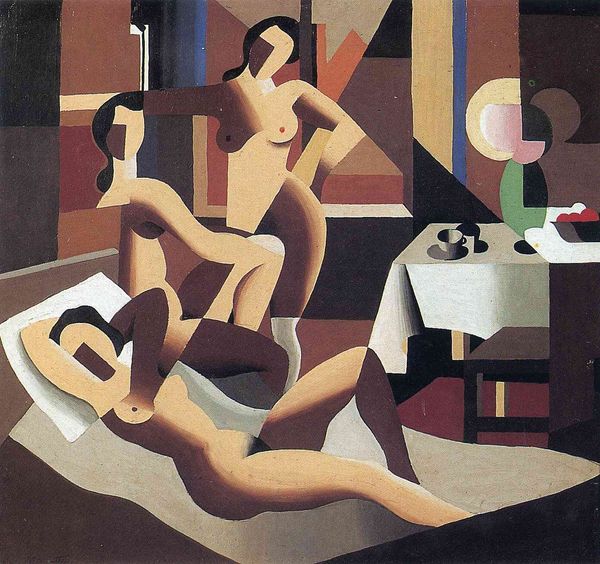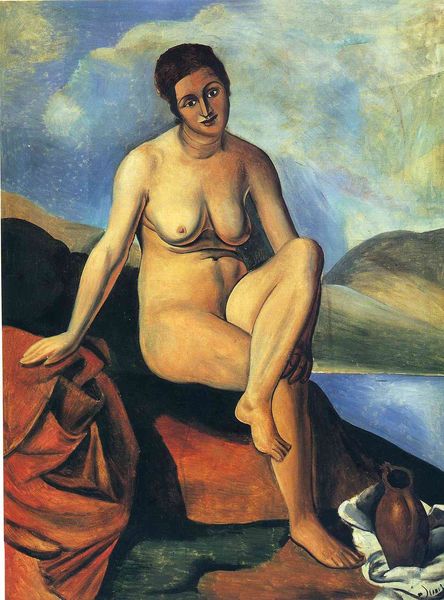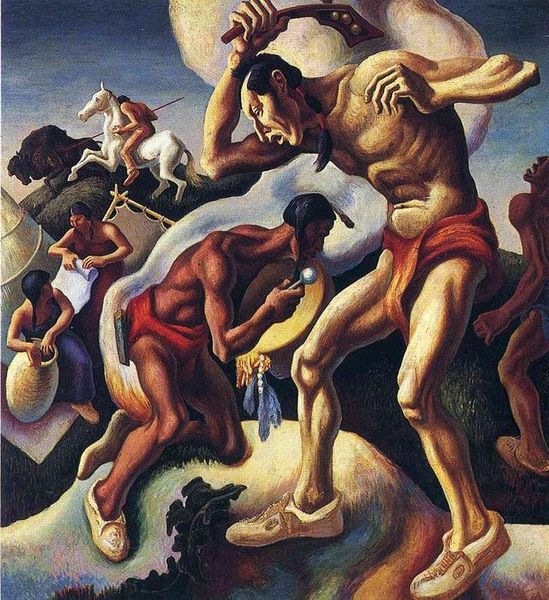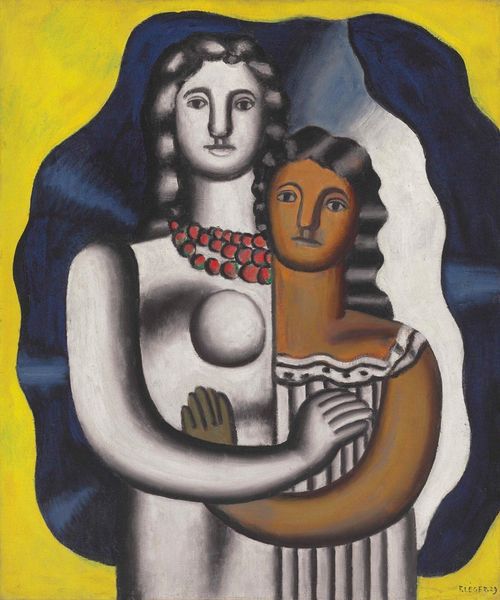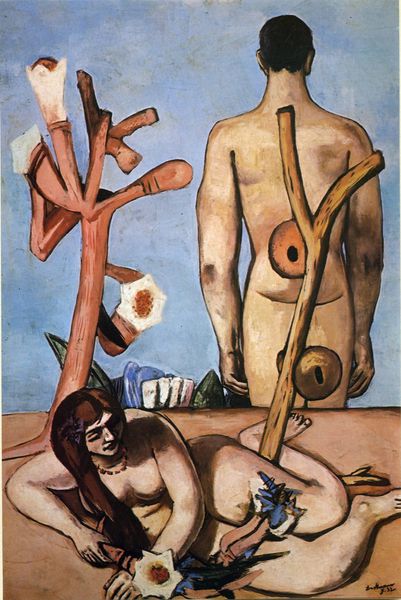
painting, oil-paint
#
portrait
#
self-portrait
#
portrait
#
painting
#
oil-paint
#
landscape
#
figuration
#
group-portraits
#
genre-painting
#
modernism
#
regionalism
#
self portrait
#
realism
Copyright: Public domain US
Curator: Thomas Hart Benton's "Self-Portrait with Rita," painted in 1922 using oil on canvas, offers a fascinating glimpse into the artist's early explorations. It strikes me as rather formal for a beach scene. What's your initial reaction? Editor: Stark. The almost sculptural solidity of the figures contrasted against the stylized landscape – there’s an unsettling tension here. The shells, the clouds, the human figures – it feels almost like they are symbols within a dream. Curator: It is striking, isn’t it? Look closely at Benton’s method here. We see this interest in layering paint to almost sculpt the figures directly onto the canvas. He wasn't interested in concealing his process; the very act of creating becomes part of the image. Also, that table - clearly a very deliberately constructed element. It grounds the pair in a physical reality, anchoring them on this seaside location. Editor: I'm drawn to that gesture of Benton holding what looks to be a crab or perhaps several shells. They appear to be the focus of Rita's attention, her expression unreadable. Seashells often represented pilgrimage, and, for women especially, fertility. Here though, their whiteness against the bronzed skin evokes vulnerability, almost a sacrifice. Are they a symbolic offering, or a reference to the labors they perform? Curator: That’s interesting because it invites a reading of this as less about a simple "day at the beach" and more about how artists and craftspeople portray their worlds, how Benton specifically was situating himself, as a worker among other workers perhaps. He’s highlighting this tension between leisure and the realities of material existence. Editor: I see the beach idyll more as a mask. The classical positioning, that unflinching gaze straight at the viewer… Is he asserting dominance, or laying bare an anxiety of being scrutinized? It could also be a representation of an internal struggle between self-image and how Benton thinks the public views him and his partner. Curator: I think by emphasizing his technique, Benton encourages us to see him as a creator, someone actively shaping his image, his world. It pulls us into the raw energy that's palpable from the artwork, inviting an open ended dialogue on labor and materiality. Editor: Perhaps the starkness reflects that era's search for meaning amidst upheaval. Through the symbolic, we glimpse a desire for both escape and enduring connection. I leave this work pondering the depth beneath its calm surface.
Comments
No comments
Be the first to comment and join the conversation on the ultimate creative platform.
